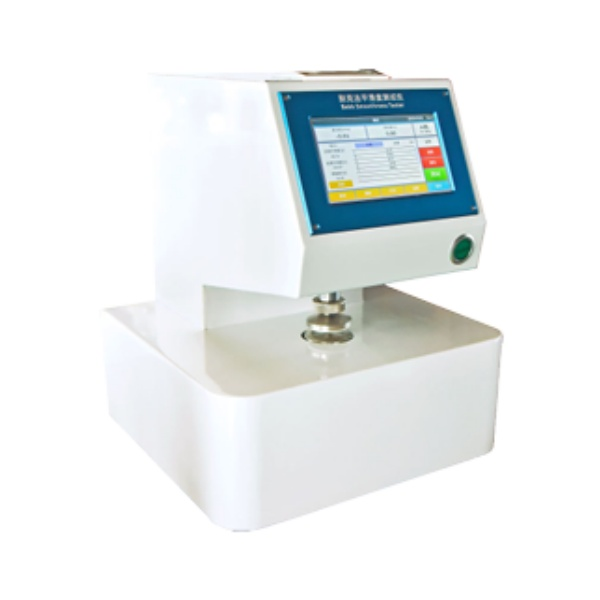ISO 7886 & ISO 8537 & ISO 11040-4
Syringe Leak Tester
Leak Testing Syringes Comply with ISO 7886/8537/11040-4
About
Syringe Leak Tester
Ensuring the safety, functionality, and reliability of medical syringes is critical for both manufacturers and healthcare providers. Leak testing syringes is one of the most essential steps in validating product quality and compliance with international standards such as ISO 7886-1, ISO 8537, and ISO 11040-4. These tests verify that syringes can withstand real-world conditions without compromising sterility or patient safety.
At Cell Instruments, we specialize in advanced syringe testing equipment designed for precision, repeatability, and compliance.

Detecting Leaks in Syringes
Why Leak Testing Syringes Is Essential
Before diving into standards and equipment, it’s essential to understand where leaks typically occur in syringes. Detecting leaks in syringes requires targeting specific weak points that can fail under use or transportation:
01
Plunger stopper seals
The interface between the plunger stopper and barrel is a common leak source, as it must maintain a tight seal during aspiration and injection.
02
Nozzle/hub or needle/barrel unions
These connections can develop gaps, especially in prefilled syringes or those with attached needles.
03
Closure systems (tip caps/needle shields)
For prefilled syringes, the closure must resist overpressure during filling or shipping to prevent liquid leakage.
Detecting Leaks in Syringes
Syringe Leak Test Methods
Different approaches exist for syringe leak testing, depending on syringe type and application:
01
Negative Pressure Test
Detects air leakage past the plunger when vacuum is applied.
02
Positive Pressure Test
Evaluates sealing by applying compression to the plunger.
03
Liquid Leakage Test
Ensures syringe barrels and closure systems resist internal pressure without leaks.
04
Functional Testing
Includes syringeability test, break-loose force, and plunger movement assessments to ensure usability.
Each method provides insights into syringe sealing performance and complements regulatory compliance.
ISO 7886-1 & ISO 8537 & ISO 11040-4
Key Standards for Syringe Leak Testing
01
ISO 7886 Annex B Air Leakage Past Plunger Stopper
- Draw water into the syringe to at least 25% of its nominal capacity.
- Withdraw the plunger until the fiducial line aligns with the nominal capacity, then clamp it in place.
- Connect the syringe nozzle to a compatible fitting (Cell Instruments’ fixtures match ISO 594-1 standards for a secure seal).
- Generate a vacuum and adjust to 88 kPa below ambient pressure (equivalent to 660 mmHg).
- Isolate the syringe and manometer, then observe for 60 seconds—any pressure drop indicates a leak.


02
ISO 7886 Annex D Liquid Leakage at Plunger Stopper
- Fill the syringe with water to its nominal capacity, then seal the nozzle.
- Apply a sideways force to the plunger to maximize radial deflection, then apply axial pressure (specifics vary by syringe size, per ISO 7886-1 Table 1).
- Hold the pressure for 30–35 seconds and check for water leakage.
01
ISO 8537 Annex B Piston Air Leakage


02
ISO 8537 Annex F Nozzle/Hub Air Leakage
- Fill the syringe with water to 25% of its capacity, leaving a small air bubble.
- Seal the nozzle or needle tip, then withdraw the plunger to full capacity.
- Hold for 15 seconds and check for air bubbles (ignoring those that appear in the first 5 seconds).
01
ISO 11040-4 Annex G Closure System Liquid Leakage Test
- Fill the prefilled syringe (test sample) to 1/3–2/3 of its nominal volume.
- Secure the syringe in a holder and apply 110 kPa of pressure for 5 seconds.
- Monitor for leakage during and after pressure release.

Choosing the Right Syringe Leak Detection Equipment
"Equipment should detect microleaks (e.g., 1 μm) for high-risk products like biologics."
– Sensitivity
"Fixtures should accommodate various sizes (e.g., 1 mL insulin to 50 mL syringes)."
– Versatility
"Ensure instruments meet ISO 7886 testing and ISO 11040 4 requirements, with data traceability for audits."
– Compliance
"Multi-station testers accelerate throughput for production lines."
– Efficiency
Leak Tester
Prefilled Syringe Testing and Container Closure Integrity
With the growing use of prefilled syringes in pharmaceuticals, container closure integrity testing is vital. ISO 11040-4 Annex G ensures that tip caps and needle shields maintain tight seals under internal pressure. Using reliable test equipment reduces the risk of contamination and enhances regulatory compliance.
Leak Tester
Syringeability Test and Functionality Evaluation
Apart from leak detection, syringeability tests measure the ease with which a fluid can be expelled from the syringe. Along with break-loose and glide force tests, these confirm that syringes are safe and comfortable for clinical use. Cell Instruments provides customized fixtures to accommodate these specialized syringe functionality tests.
Frequently Asked Questions about Syringe Leak Test
1. What is the purpose of syringe leak testing?
Leak testing verifies the sealing performance of syringes to prevent contamination, medication loss, and functionality issues.
2. Which ISO standards are relevant for syringe testing?
The main standards are ISO 7886 (hypodermic syringes), ISO 8537 (insulin syringes), and ISO 11040-4 (prefilled syringes).
3. What equipment is used for syringe leak detection?
Common instruments include vacuum-based syringe air leakage testers, positive pressure testers, and multifunctional medical syringe testers.
4. How does container closure integrity testing apply to prefilled syringes?
It ensures that tip caps and needle shields maintain a leak-proof seal under pressure, preventing contamination.
5. Why choose Cell Instruments for syringe testing solutions?
Because we offer ISO-compliant equipment, custom automation solutions, and reliable instruments trusted by global medical manufacturers.


Get in touch
No. 5577 Gongyebei Rd, Licheng, Jinan, 250109, Shandong, P.R.C.
marketing@celtec.cn
+86 185 6001 3985
